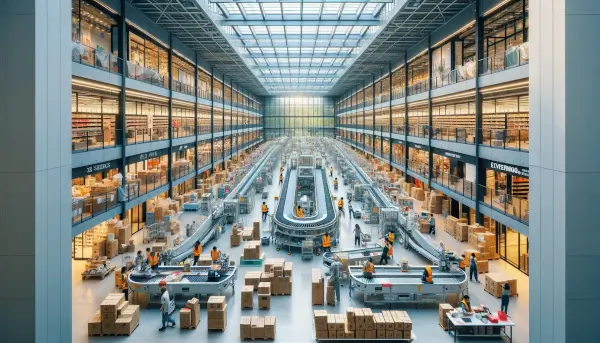The rise of online shopping requires closeness to consumers, leading underused malls to become multifunctional fulfillment centers, reshaping retail’s future.
In the era of imminent drone deliveries, as envisioned by giants like Walmart and Amazon, skeptics question the timeline. However, the booming online shopping landscape demands efficient final-mile delivery, urging businesses to position inventory closer to consumers. Traditional distribution centers typically occupy remote locations, chosen for cost-effectiveness and accessibility to multiple population centers.
Walmart’s advantage lies in its extensive network of 4,700 stores, strategically situated within a 10-mile radius of 90% of the U.S. population. Leveraging this proximity, Walmart has repurposed its retail space for e-commerce order fulfillment. Amazon, on the other hand, is expanding its distribution centers (DCs) into urban neighborhoods and suburbs, striving to create its own delivery ecosystem, surpassing even the scale of UPS and FedEx.
However, for businesses outside these retail giants, competing in the era of rapid, direct-to-consumer, smaller shipment demands presents challenges. Densely populated areas often lack suitable greenfield sites for new DCs.
One practical solution is repurposing underused mall space for fulfillment purposes. Malls offer large structures with multiple loading docks, conveniently located for both consumers and deliveries.
Amazon initially seized this opportunity, converting around 25 shopping malls into fulfillment centers between 2016 and 2019, and exploring partnerships with major mall owners like Simon Property Group. Although these endeavors initially gained traction, interest waned in recent years.
Fillogic, led by CEO Bill Thayer, specializes in converting underutilized retail spaces like malls into middle-mile fulfillment and reverse logistics centers. Fillogic selects suitable candidates based on location, facilities, and introduces “channel-free” logistics, streamlining inventory management.
Shopping malls present the potential for hybrid facilities, blending logistics and fulfillment with in-person shopping experiences. This concept aligns with the evolving landscape of omnichannel commerce, which, according to Thayer, is an outdated term. As e-commerce became a major driver of sales, it required integration into the traditional retail fulfillment environment.
Thayer argues that separating sales channels creates barriers and inefficiencies, hindering customer satisfaction. People are increasingly seeking in-person shopping experiences in combination with online convenience.
Converted malls can offer a unique blend of shopping, entertainment, and dining experiences, catering to diverse consumer preferences. Thayer emphasizes the importance of designing malls with logistics in mind, adopting channel-free logistics that prioritize efficient handling of goods.
Technology plays a vital role in this logistics evolution, focusing on solutions that account for real-world consumer behavior. Fillogic aims to simplify the process, facilitating digital purchases and convenient returns.
Moreover, Fillogic’s model highlights sustainability benefits by repurposing existing infrastructure instead of constructing new distribution centers. Thayer emphasizes the environmental impact of massive new construction projects and advocates for the efficient utilization of existing structures.
In essence, Thayer envisions a logistics landscape that harmonizes with evolving consumer habits. Fillogic claims that its approach not only improves service and reduces costs for retailers but also has a positive environmental impact by conserving space and minimizing emissions.
The transformation of malls into versatile fulfillment centers marks an innovative solution for adapting to the evolving e-commerce landscape, meeting consumer expectations, and addressing sustainability concerns.







